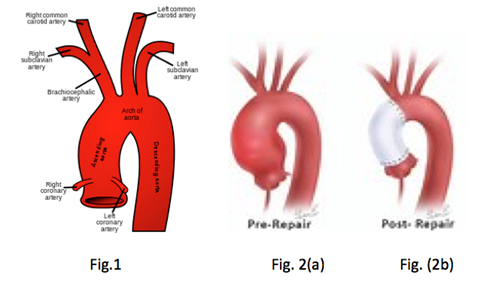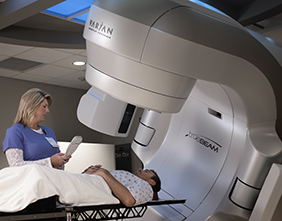Lima Memorial Health Focus: You Have an Aneurysm of the Ascending Aorta, Now What?
posted on: 2/21/2018 2:30:36 PM
Health & Fitness Guest Columnist
Kwabena Mawulawde, MD, FACS, FACC, FACP
Cardiothoracic & Vascular Surgeon
Ohio Cardiothoracic & Vascular Surgeons, Inc.
Many patients have the experience of being told for the first time by their physician: “You have an aneurysm of the ascending aorta.” Surprised and befuddled, their next questions become: “What is it? Is this serious? What do I do?” The purpose of this article is to provide concise, but informative answers to these critical questions which may assist patients in making the appropriately tailored decision.

The aorta is the largest blood vessel in the body which carries oxygen-enriched blood from the heart to every organ and tissue. It is divided into ascending, arch, descending and abdominal (Fig.1). Above the aortic valve emerges the right and left coronary arteries, which supply blood to the heart. It continues as the ascending aorta which may be 2-3 inches in length. Branches from the arch supply the arms and head, and those from the descending and abdominal aorta, supply the organs within the chest and abdominal cavities, respectively. It terminates into two branches, each supplying blood flow to the right and left halves of the pelvic region and the lower extremities.
An aneurysm is an abnormal dilatation, or ballooning, of part of a blood vessel, in this case, the ascending aorta (Fig.2a). Risk factors for its development are smoking, hypertension (high blood pressure), atherosclerosis (hardening of the arteries) and age in the sixties and seventies. Patients with connective tissue disorders such as Marfan’s syndrome, Ehlers-Danlos syndrome and Loeys-Dietz syndrome are also at significant risk for aneurysm formation.
Aneurysms involving the ascending aorta are especially dangerous because they characteristically have a propensity to rupture with little or no warning signs, creating an urgent life-threatening situation. In such occurrence, immediate surgery is necessary to fix the problem. These aneurysms can also cause a leaky aortic valve which may place an increased strain on heart function.
Most aneurysms of the ascending aorta are diagnosed incidentally. Usually a chest x-ray, CT scan or MRI of the chest is obtained for other reasons, and they become the first indication of the presence of an aneurysm. Aneurysms may also be found incidentally during an echocardiogram or cardiac catheterization. When aneurysms are diagnosed, whether incidental or otherwise, they require close follow up. A yearly CT scan, with or without dye contrast or magnetic resonance imaging (MRI), becomes part of the surveillance protocol. Symptoms of an enlarging or “leaking” aneurysm may simulate symptoms of a heart attack – chest pain with or without radiation to the back –this could be isolated back pain between the shoulder blades, ulcer disease, esophageal reflux or joint pain. When these symptoms occur, particularly if unresolved by taking over-the-counter or prescribed medication, immediate medical evaluation should be sought.
Surgical intervention is indicated if the size of the aneurysm, in most cases, is equal to or greater than 5.5 centimeters. If, during surveillance studies, the aneurysm has grown over a relatively short period of time, this also may be an indication for surgery. Because of the risk of rupture, patients may also require earlier surgical intervention, should they have one of the connective tissue disorders or a concomitant diseased bicuspid (two leaflets instead of the normal tri-leaflet) aortic valve, even though the diameter of the aneurysm may be less than 5.5 centimeters
Surgery involves using a heart-lung machine, an apparatus used by the heart surgeon which takes over the patient’s breathing and circulation, while the surgeon replaces the ascending aorta with a synthetic (Dacron) meshed graft (Fig.2b). Occasionally, the surgeon may need to replace the entire ascending aorta along with the aortic valve and part of the aortic arch.
Beyond the connective tissue disorders and bicuspid aortic valve, which are genetically linked and a predisposing factor, the keys to prevention are no smoking, tight blood pressure control with medication and exercise, and a healthy diet. If you are diagnosed with this condition, seek guidance from your primary care physician and request a consultation with a cardiothoracic surgeon experienced in caring for patients with this surgical condition.
The expert surgeons at Ohio Cardiothoracic & Vascular Surgeons, Inc. treat a full range of disorders and diseases affecting the aorta, such as ascending and aortic arch aneurysms and aortic dissection. The best option for you will depend on a number of factors, such as the size and location of your aneurysm, your overall health and age and, if possible, personal preference. Be sure to request a consultation with an experienced cardiothoracic surgeon to discuss all options.


Originally published in The Lima News Health and Fitness section.
Website




